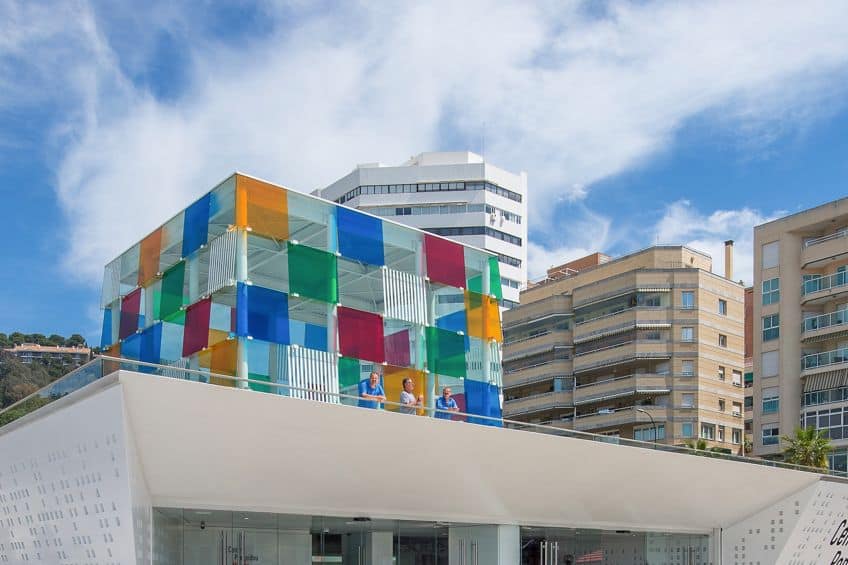Best Art Museums and Art Galleries in Spain – The Top 18
Spain is home to some of the world’s best art museums and galleries, which contain some of the most iconic artworks in art history. In this article, we will help you discover some of the most loved Spanish museums and art institutions that you can add to your travel itinerary!
Contents
- 1 Spanish Sites of Art History
- 2 The Top 18 Best Art Museums and Art Galleries in Spain
- 2.1 Real Academia de Bellas Artes de San Fernando (Est. 1752)
- 2.2 Museo del Prado (Est. 1819)
- 2.3 The Museum of Cadiz (Est. 1835)
- 2.4 Seville Museum of Fine Arts (Est. 1835)
- 2.5 National Museum of Decorative Arts (Est. 1912)
- 2.6 Museu Nacional d’Art de Catalunya (MNAC) (Est. 1934)
- 2.7 Cerralbo Museum (Est. 1944)
- 2.8 Lázaro Galdiano Museum (Est. 1951)
- 2.9 Museo Picasso (Est. 1963)
- 2.10 The Museum of Arts and Popular Customs of Seville (Est. 1973)
- 2.11 The Dalí Theatre and Museum (Est. 1974)
- 2.12 Joan Miro Foundation (Est. 1975)
- 2.13 Instituto Valenciano de Arte Moderno (IVAM) (Est. 1989)
- 2.14 Museo Nacional Centro de Reina Sofía (Est. 1992)
- 2.15 Museo Thyssen-Bornemisza (Est. 1992)
- 2.16 Barcelona Museum of Contemporary Art (Est. 1995)
- 2.17 The Guggenheim Museum Bilbao (Est. 1997)
- 2.18 Centre Pompidou Malaga (Est. 2015)
- 3 Frequently Asked Questions
Spanish Sites of Art History
Spain is one of the best places to visit if you are seeking to explore the European arts. Boasting more than 800 significant collections and museums, Spain offers many of the finest artworks in the world. The Spanish art world is jam-packed with a diverse array of art from some of the world’s best artists, including the works of old masters such as El Greco, Francisco Goya, Diego Velázquez, and Juan Sánchez Cotán as well as Contemporary artists such as Antoni Tapies and Miquel Barcelo.

Madrid, the capital of Spain and home of the Royal Palace, is among the most elegant and impressive sites for indulging your art fantasies. Although Madrid is the home of some of the world’s most prestigious art institutions, there are other sites in Spain that you should know about, which will help broaden your understanding of art history through a Spanish historical lens.
Luckily for you, we have covered a list of the best art museums and art galleries in Spain, which house incredible collections and programmes that will have you occupied for weeks!
The Top 18 Best Art Museums and Art Galleries in Spain
From the most famous museums in Madrid, the Museo del Prado to the Museo Reina Sofía, you can be sure that you will find art in most corners of Spain. Below, we have compiled a list of the top 18 best art museums and art galleries in Spain that are must-see!
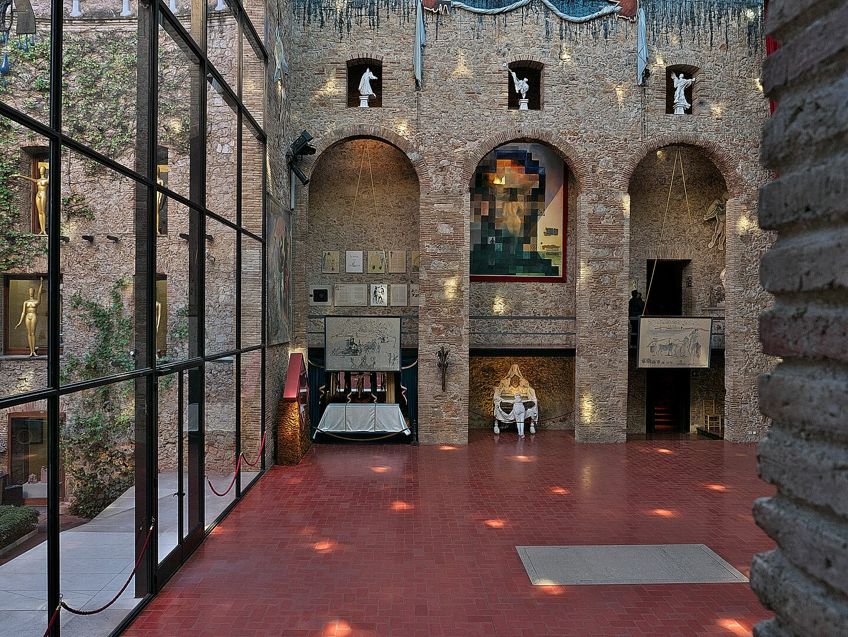
Real Academia de Bellas Artes de San Fernando (Est. 1752)
| Location | Madrid, Spain |
| Date | 1752 |
| Founder | King Fernando VI (1713 – 1759) |
| Architect(s) | Diego de Villanueva (1715 – 1774) |
| Size m2 | Unavailable |
| Visitors Per Year | Unavailable |
The Royal Academy of Fine Arts of San Fernando is one of the oldest Spanish museums located in central Madrid. The museum was established in the late 18th century and was acquired by King Charles III to become one of the best academies and museums in Spain. The museum was designed by José Benito de Churriguera and was later converted from a Baroque-styled building into an academic institution as a Neoclassical-style building.
The collection at the museum includes works by artists such as Giuseppe Arcimboldo, El Greco, José de Ribera, Corrado Giaquinto, and Louis Michel van Loo.
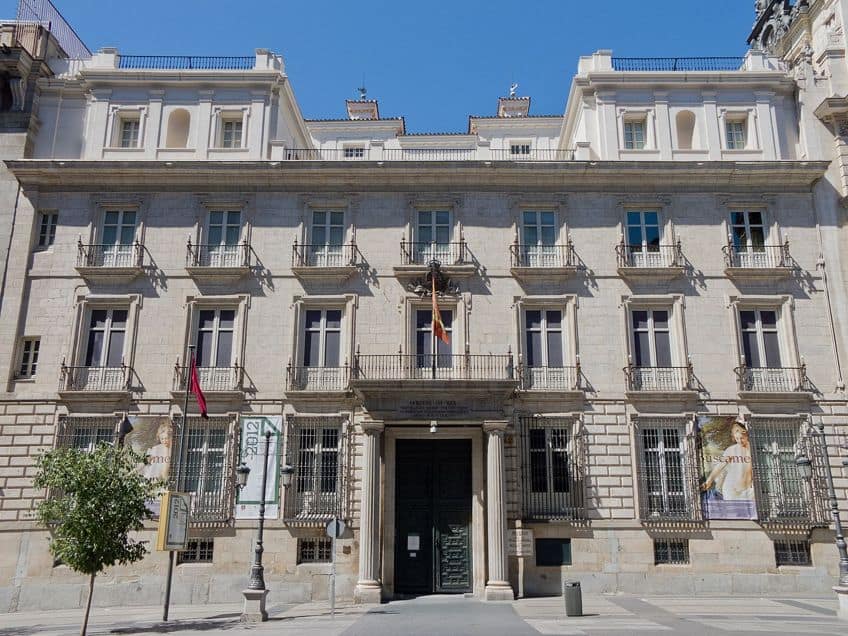
Museo del Prado (Est. 1819)
| Location | Madrid, Spain |
| Date | 1819 |
| Founder | King Charles III (1716 – 1788) |
| Architect(s) | Juan de Villanueva (1739 -1811) and Rafael Moneo (1937 – Present) |
| Size m2 | 21,832.2 |
| Visitors Per Year | 852,161 (2020) |
Also known as the Prado Museum, the Museo del Prado is one of the best art museums and art galleries in Spain spanning more than 235,000 square feet and boasting one of Europe’s finest art collections. The word “Prado” in the museum’s name translates to “meadow” and was designed by Pritzker Prize winner and architect, Rafael Moneo. The Prado’s collection boasts an art collection inclusive of works from the former royal collection and works dating between the 12th and early 20th centuries. The Spanish art museum was established in 1819 as a museum dedicated to painting and sculpture but over time, the establishment grew its collection to include work by prominent artists such as Francisco de Goya, Diego Velázquez, and Sir Peter Paul Rubens.
The art museum was ranked the 16th most visited art museum in the world in 2020 and holds the title of Spain’s largest art museum.
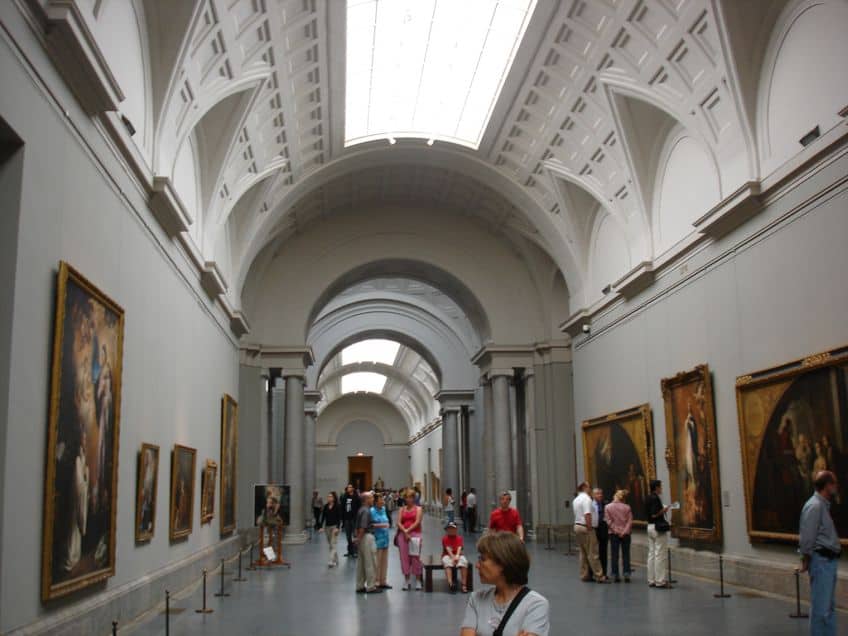
The Museum of Cadiz (Est. 1835)
| Location | Cádiz, Spain |
| Date | 1835 |
| Founder | King Charles III (1716 – 1788) |
| Architect(s) | Juan Cabrera Latorre (n.d.) and Alfonso Jiménez (n.d.) |
| Size m2 | Unavailable |
| Visitors Per Year | Unavailable |
The Museum of Cadiz is located in one of the earliest Western European cities on the southwest corner of the Iberian Peninsula. The Spanish art museum was originally founded in 1835 after a few artworks were seized from a monastery. Some of the most famous artworks from its initial collection include works by Peter Paul Rubens and Francisco de Zurbarán. The museum harnessed the art produced by the city’s fine arts academy and gradually built up its collection. In 1970, the museum’s fine art sector merged with the archaeology sector (Provincial Museum of Archaeology) after the discovery of a Phoenician sarcophagus in 1877.
This museum is perfect for a visitor interested in Phoenician and Roman art from the 20th century.
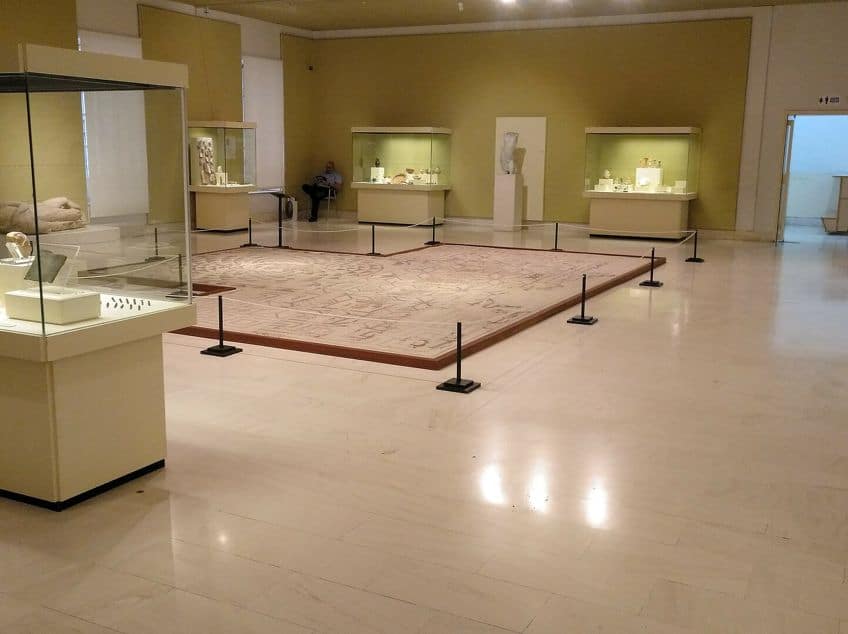
Seville Museum of Fine Arts (Est. 1835)
| Location | Seville, Spain |
| Date | 1594 (building); 1835 (museum) |
| Founder | General State Administration |
| Architect(s) | Juan de Oviedo y de la Bandera (1565 – 1625) |
| Size m2 | Unavailable |
| Visitors Per Year | Unavailable |
This famous institution is one of two Seville-based museums, next to the Museo Arqueológico, that you should explore! The Seville Museum of Fine Arts is one of Spain’s earliest medium-sized art institutions and the most prestigious fine art gallery. The museum was initially a convent built in 1594 and was officially established as an art museum in 1835.
Since then, the museum acquired a dynamic collection of art from the Spanish Golden Age to the 20th century, which illustrates not only the height of art in Spain but also the trajectory of art history through a Spanish lens.
Some of the most captivating elements of the museum include its imperial staircase along with many fascinating temporary exhibitions in the art gallery as well as the natural scenery of the courtyard. The Seville Museum of Fine Arts is an incredible place to also delve into the study of artwork from the Seville school and explore works by artists such as El Greco and Valdés Leal among many other great artists from the 15th and 17th centuries.
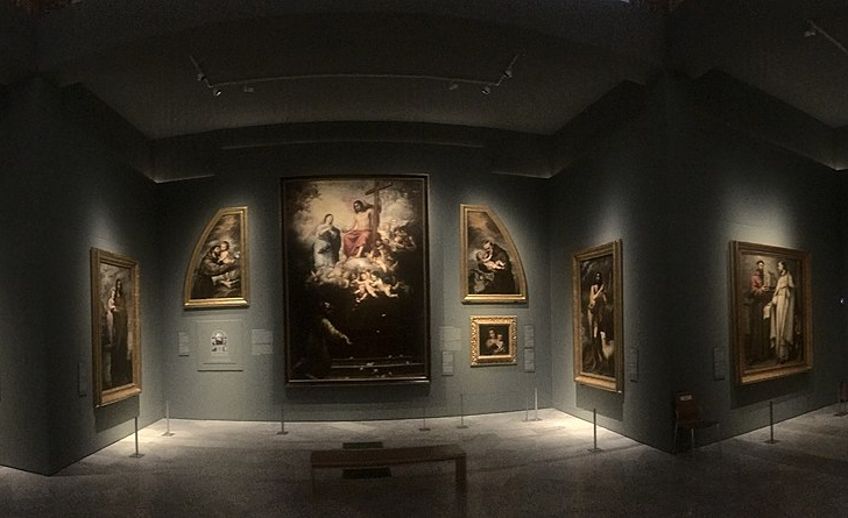
National Museum of Decorative Arts (Est. 1912)
| Location | Madrid, Spain |
| Date | 1912 |
| Founder | State-owned; Opened by Síle de Valera (1954 – Present) |
| Architect(s) | Rene Sergent (1865 – 1927) |
| Size m2 | Unavailable |
| Visitors Per Year | Roughly 73,000 |
The National Museum of Decorative Arts is among the most famous museums in Madrid and is home to more than 15,000 art objects. The museum was founded in 1912 with most objects in its collection originating from Spain and even some from China. The museum also houses a collection from King Charles III under the Royal Cabinet of Natural History that features a range of decorative art objects, including ceramics, glassware, gold, paper works, sculptures, and textiles.
One of the key highlights of the museum is the 18th-century kitchen that many become captivated by.

Museu Nacional d’Art de Catalunya (MNAC) (Est. 1934)
| Location | Barcelona, Spain |
| Date | 1934 |
| Founder | Joaquim Folch i Torres (1886 – 1963) |
| Architect(s) | Eugeni P. Cendoya (1894 – 1975), Enric Catà (1878 – 1937, and Pere Domènech i Roura (1881 – 1962) |
| Size m2 | 50,000 |
| Visitors Per Year | Roughly 900,000 |
The Museu Nacional d’Art de Catalunya is one of the most famous Spanish museums in Barcelona that is praised for its extensive collection of Romanesque church paintings, modern art, and Catalan art from the 19th and 20th centuries. The museum was built in the famous Palau Nacional, which was constructed around 1929 and is widely known today as one of the largest Spanish art museums.
The museum’s collection of Romanesque art includes many historical murals that go unrivaled and date to between the 11th and 13th centuries.
The collection also includes important works that once decorated the Old Catalonian churches and were first discovered in the 20th century. The museum’s Modern art display, which was set up in 2014, is also not to be missed since it covers a diverse range of artworks that showcase multiple art styles as per their socio-historical contexts. The Spanish art gallery also hosts temporary exhibitions that have received global acclaim. Needless, the Museu Nacional d’Art de Catalunya is a museum of Catalan art history that is worth a visit.
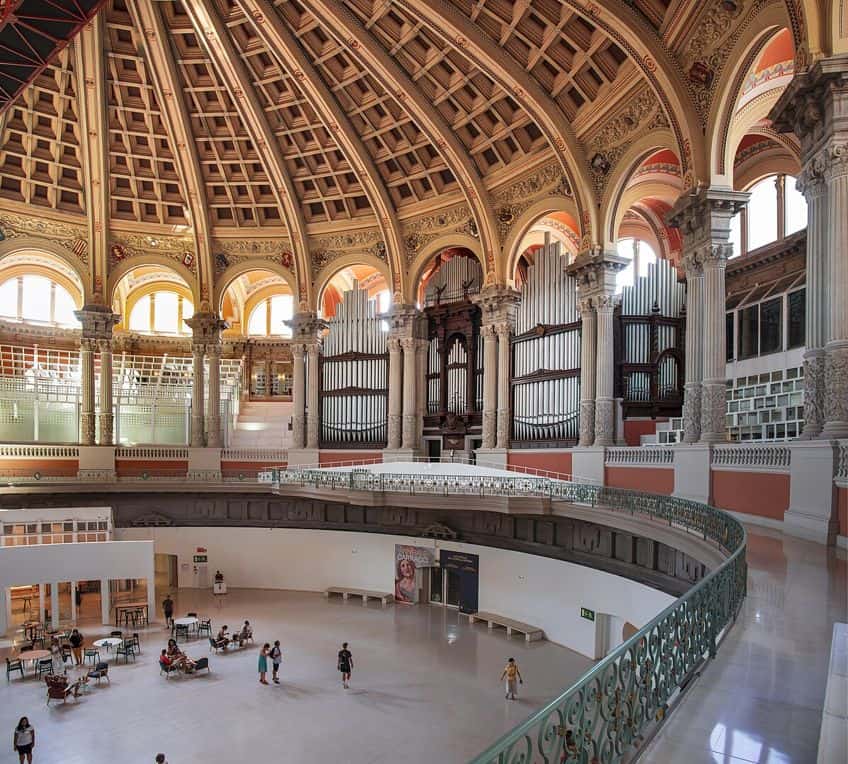
Cerralbo Museum (Est. 1944)
| Location | Madrid, Spain |
| Date | 1944 |
| Founder | Enrique de Aguilera y Gamboa (1845 – 1922) |
| Architect(s) | Guillermo Santomà (n.d.) |
| Size m2 | Unavailable |
| Visitors Per Year | Unavailable |
The Cerralbo Museum is one of the oldest art institutions with one of the largest collections of art in Madrid. The museum was initially a private art gallery in 1893 under the ownership of the Marquis of Cerralbo, Enrique de Aguilera y Gamboa. The institution was then inherited by the State in the early 20th century and then opened to students and researchers by 1924.
The interior of the building oozed luxury and by 1962, it was established as a historical artistic monument.
The collection consists of close to 25,000 artworks, including a diverse archaeological collection from 19th-century collectors of Greek, Roman, Egyptian, and Etruscan artifacts. The museums also contain Asian artwork from Japan and China while the original collection of the Marquis showcases religious artworks of Italian and Spanish origin. The Cerralbo museum is certainly not one to be missed in Madrid!
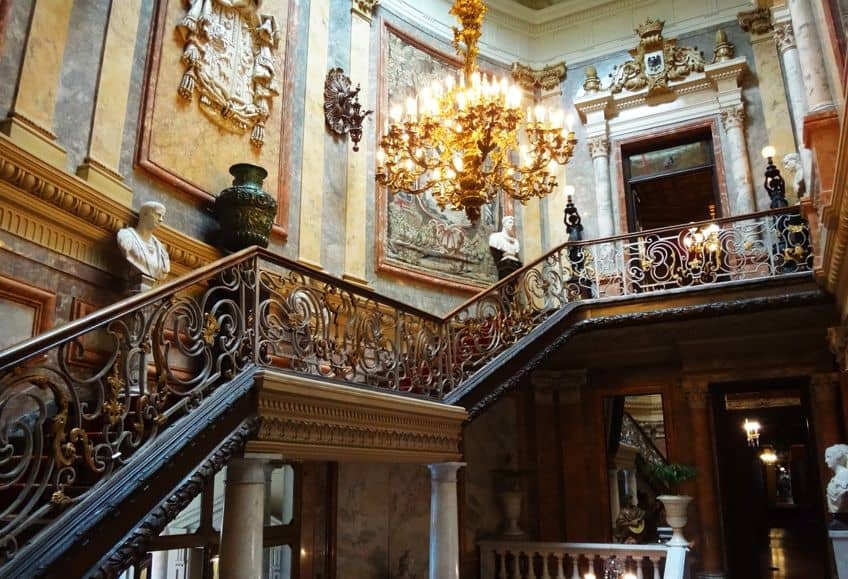
Lázaro Galdiano Museum (Est. 1951)
| Location | Madrid, Spain |
| Date | 1951 |
| Founder | José Lázaro Galdiano (1862–1947) |
| Architect(s) | Fernando Chueca Goitia (1911 – 2004) |
| Size m2 | Unavailable |
| Visitors Per Year | Unavailable |
Perhaps one of the most famous museums in Madrid, the Lázaro Galdiano Museum houses over 15,000 artworks collected over 70 years and is one of the best Madrid art museums to visit when in Spain. Lázaro Galdiano was a famous Spanish art collector and financier whose art collection was the foundation of the museum. Galdiano was recognized as one of the 19th century’s most prominent patrons of Romantic and Old Master artwork.
The museum was designed in a Neo-Renaissance style and hosts artwork by masters such as El Greco, Francisco Goya, Hieronymous Bosch, and many other Spanish masters.

Museo Picasso (Est. 1963)
| Location | Barcelona, Spain |
| Date | 1963 |
| Founder | Jaume Sabartés i Gual (1881 – 1968) |
| Architect(s) | Gluckman Mayner Architects (n.d.), Cámara Martín Delgado Arquitectos (n.d.), ARUP engineering firm, María Medina (landscaping; n.d.) |
| Size m2 | 10,628 |
| Visitors Per Year | Over 1 million |
The Picasso Museum in Barcelona is one of the most famous Spanish museums that art lovers and fans of Spanish Cubist Pablo Picasso flock to. Located in Catalonia, the museum houses more than 4,000 artworks by Pablo Picasso and is best known as the first institution that was built in honor of Picasso’s works while the artist was still alive. The museum is also a reflection of the artist’s personal relationship with Barcelona since it was a place that shaped much of his adolescent years. The museum was founded by Picasso’s close friend Jaume Sabartés who was gifted many of the artist’s paintings and drawings.
The idea for the museum was then secured between the city of Barcelona and Sabartés and the institution was then opened to the public in 1963.
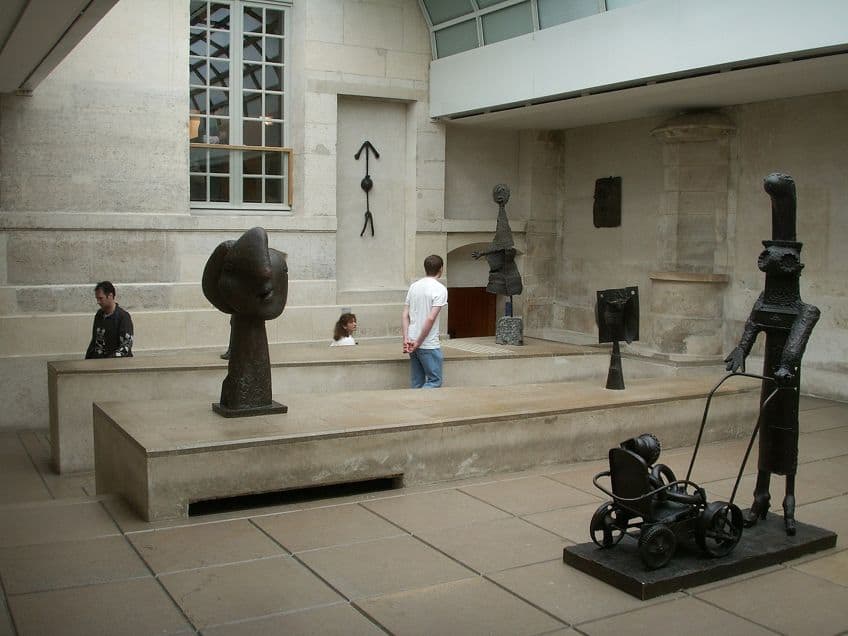
The Museum of Arts and Popular Customs of Seville (Est. 1973)
| Location | Seville, Andalusia, Spain |
| Date | 1973 |
| Founder | The regional government of Andalusia |
| Architect(s) | Aníbal González, Delgado Roig, José Galnares Sagastizábal, and Fernando Villanueva Sandino |
| Size m2 | Unavailable |
| Visitors Per Year | Unavailable |
This popular Seville-based art museum is also one of the most famous Andalusian art galleries in Spain that host not only a wide collection supported by fieldwork, research, the Museum of Fine Arts, and the Andalusian autonomous government. The museum was originally an extension of the Seville Museum of Fine Arts in 1972, which was then opened to the public the following year.
The collection showcases traditional Andalusian culture and art along with works from the original collection, including the costumbrista paintings of the Aguiar collection.
The museum boasts one of the best collections of embroidery and lace with more than 6,000 pieces to feast your eyes on. Additionally, the Spanish art gallery and museum was also a famous site used for filming television shows such as The Wind and the Lion (1974) and Harem (1985).
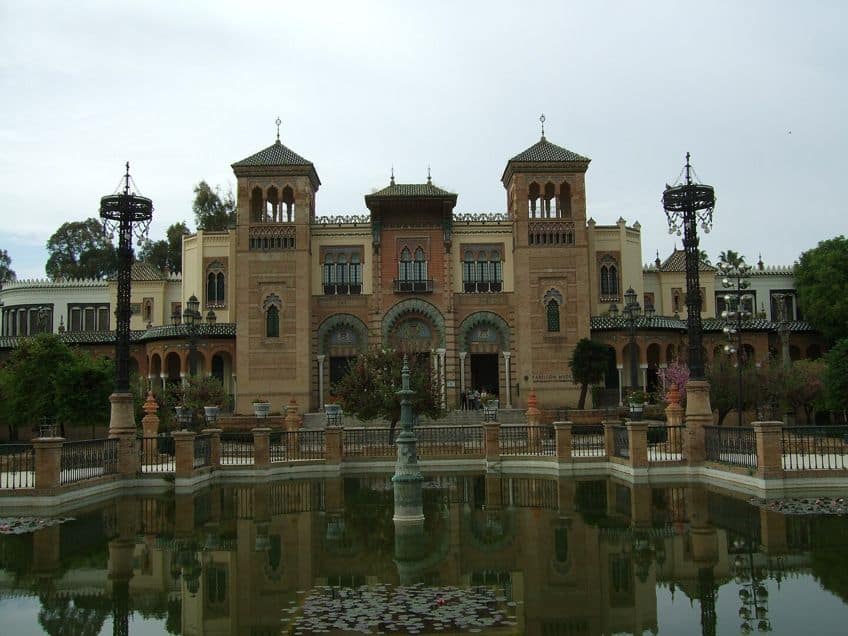
The Dalí Theatre and Museum (Est. 1974)
| Location | Figueres, Spain |
| Date | 1974 |
| Founder | Salvador Dalí (1904 – 1989) |
| Architect(s) | Joaquim de Ros i Ramis (1911 -1988) and Alexandre Bonaterra (1916 – 2006) |
| Size m2 | Unavailable |
| Visitors Per Year | Over 400,000 |
You cannot visit Spain as a Surrealist practitioner without visiting the Dalí Theatre and Museum, located in Figueres, Catalonia. The famous Spanish art museum hosts a massive collection of works by Surrealist artist and legend, Salvador Dalí, whose dream-like creations and imaginative insight into his perceived reality shaped the movement of Surrealism itself. The museum receives more than 1.3 million visitors each year and is made up of a theater and an art museum.
The theater is regarded as the heart of Figueres where the artist himself is buried and was one of the first sites where he exhibited his artwork as a young man.
The theater was destroyed during the Spanish Civil War but later rebuilt by the mayor and Dalí himself. One of the highlights of the museum is the anamorphic Mae West Lips Sofa (1972) installation that remains an iconic part of the museum’s history. In addition to Dalí’s work, one can also find works by Marcel Duchamp, El Greco, and Antoni Pitxot.
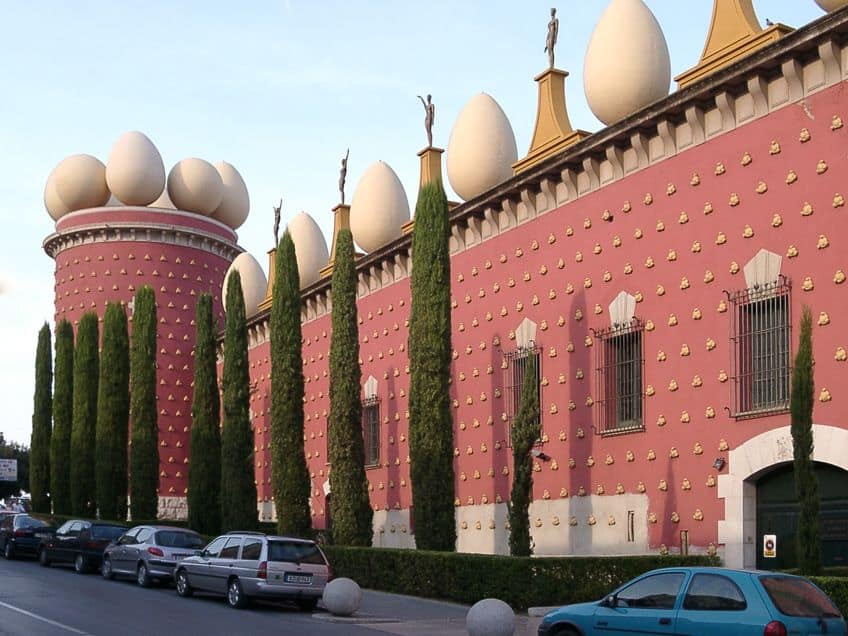
Joan Miro Foundation (Est. 1975)
| Location | Barcelona, Spain |
| Date | 1975 |
| Founder | Joan Miró i Ferrà (1893 – 1983)and Joan Prats (1891 – 1970) |
| Architect(s) | Josep Lluís Sert (1902 – 1983) |
| Size m2 | Unavailable |
| Visitors Per Year | Unavailable |
The Joan Miro Foundation is situated in Montjuic and was established to commemorate the Catalan artist Joan Miró i Ferrà. The foundation was founded alongside Joan Prats, a close associate of Joan Miró, and was built to help aspiring artists explore and experiment with the genre of Contemporary art. The institution was designed by Josep Lluís Sert and opened to the public in 1975.
The establishment of the foundation was to ensure that the people of Barcelona could access their cultural heritage and shift the narrative of the role of an art museum.
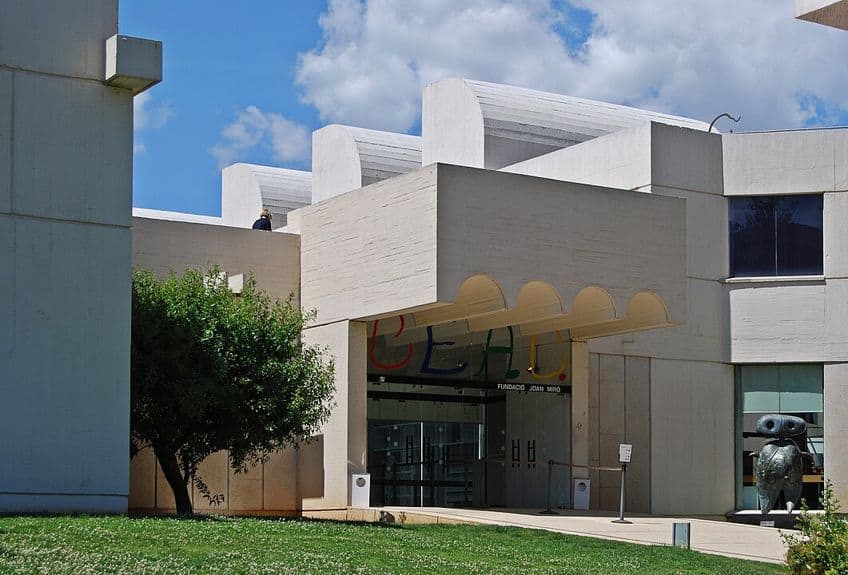
Instituto Valenciano de Arte Moderno (IVAM) (Est. 1989)
| Location | Valencia, Spain |
| Date | 1989 |
| Founder | Valencian Government |
| Architect(s) | Emilio Giménez (1932 – 2014) and Carlos Salvadores (n.d.) |
| Size m2 | 18,200 |
| Visitors Per Year | Over 1 million |
The Instituto Valenciano de Arte Moderno is one of the most iconic Spanish art museums located in Valencia and offers a dynamic permanent collection of Modern and Contemporary art. The museum is best known for its program that continues to strengthen the blend of art and photography, including its impressive collection of around 12,000 artworks by many great international and Spanish artists.
Some highly-acclaimed works you can expect to see at the museum include works by Jean Dubuffet, James Turrell, Yves Klein, Antoni Tàpies, Robert Rauschenberg, and Alexander Calder.
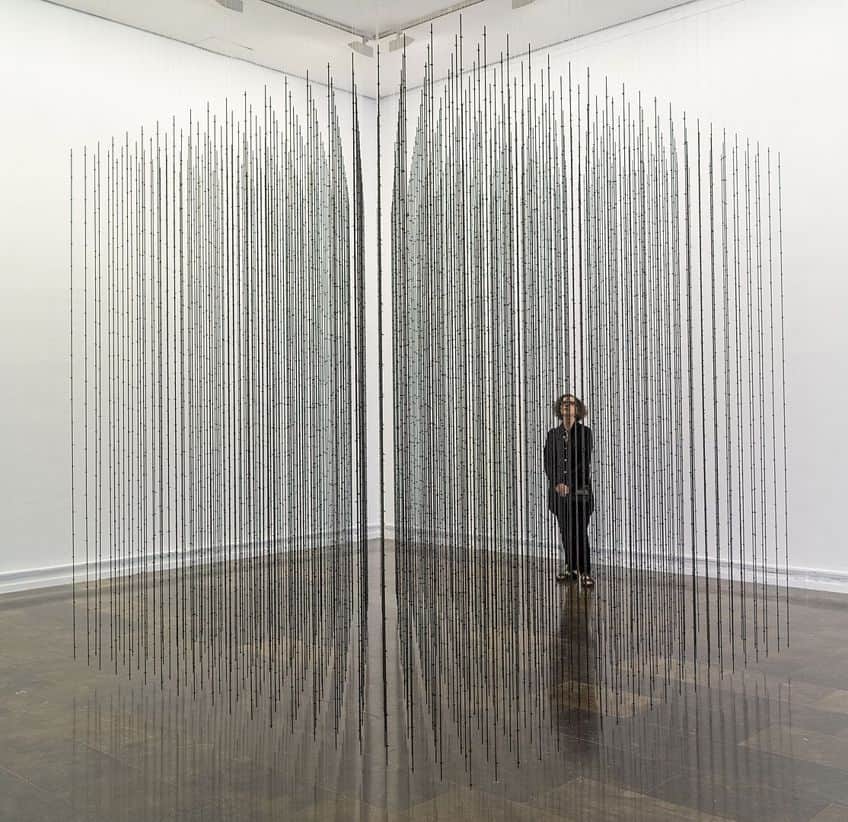
Museo Nacional Centro de Reina Sofía (Est. 1992)
| Location | Madrid, Spain |
| Date | 1992 |
| Founder | Juan Carlos I (1938 – Present) |
| Architect(s) | José Luis Íñiguez de Onzoño (1927 – 2022) and Antonio Vázquez de Castro (1929 – Present) |
| Size m2 | 84,048 |
| Visitors Per Year | Over 1.6 million |
The Museo Nacional Centro de Reina Sofia is among the most famous museums in Madrid that first opened its doors to the public in 1992. The name of the museum was derived from the Spanish monarch Queen Sofia and is situated in the city of Madrid.
The art museum holds an expensive art collection with artwork from artists such as Pablo Picasso, Joan Miro, Jose Gutierrez Solana, and Salvador Dali.
The museum also boasts one of the best paintings in the world, the Guernica (1937) by Picasso as well as Lying Figure by Francis Bacon. The Reina Sofia is also one of the most visited museums in the world with over 1.6 million visitors pre-Covid. Alongside the Prado museum and the Museo Thyssen-Bornemisza, the Museo Nacional Centro de Reina Sofia forms part of the “Golden Triangle of Art” in Europe.
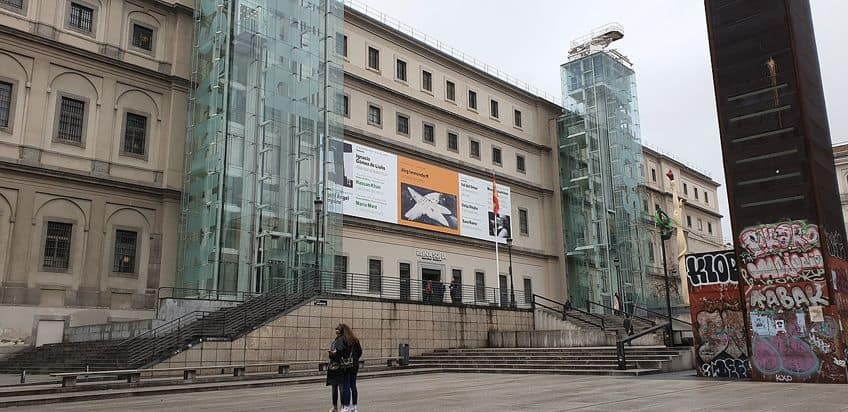
Museo Thyssen-Bornemisza (Est. 1992)
| Location | Madrid, Spain |
| Date | 1992 |
| Founder | Baron Heinrich Thyssen-Bornemisza (1875 – 1947) and Hans Heinrich (1921 – 2002) |
| Architect(s) | Alessandro Pico del la Mirándola (1566 – 1637) and Francisco Sánchez (n.d.) |
| Size m2 | Unavailable |
| Visitors Per Year | Over 1 million |
Spanning almost all genres of Spanish art between the 13th and 20th centuries, the Museo Thyssen-Bornemisza is among the top three art museums to visit in Spain. The Museo Thyssen-Bornemisza was founded in 1992 and is also referred to casually as the Thyssen. Situated quite close to the Prado, the Thyssen is key to the golden triangle as its collection “fills in the gaps” of the art collections of its neighbors.
At one point, the Thyssen was known for having the second-largest collection in the world alongside the British Royal Collection.
The collection began with the founder of the museum, Heinrich, Baron Thyssen-Bornemisza de Kászon, in the early 20th century. Among the finest works in the collection include El Greco’s Annunciation (1575 – 1576), Rembrandt’s Self-Portrait Wearing a Hat and Two Chains (n.d.), and Portrait of Millicent Leveson-Gower, Duchess of Sutherland (1904) by John Singer Sargent.
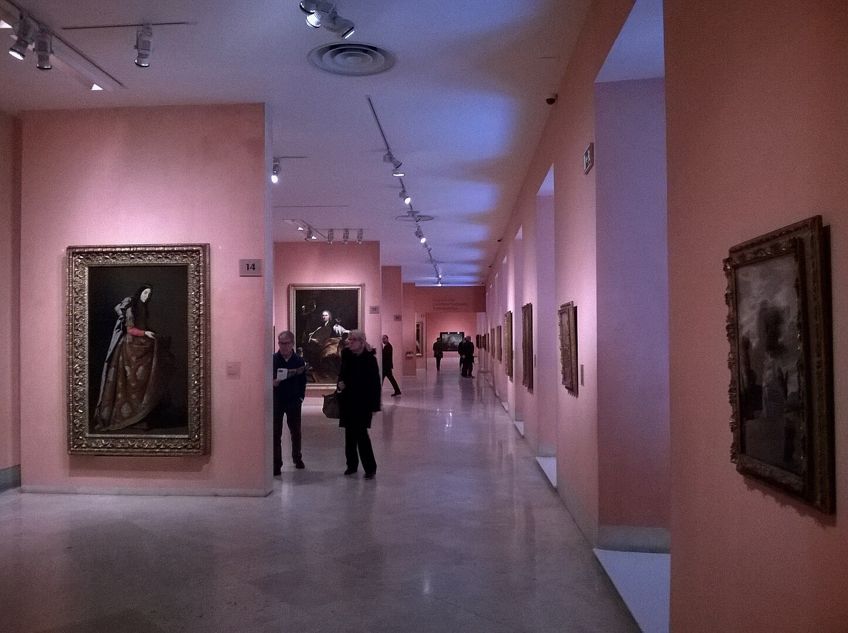
Barcelona Museum of Contemporary Art (Est. 1995)
| Location | Barcelona, Spain |
| Date | 1995 |
| Founder | Leopoldo Rodés (1935 – 2015); Government of Catalonia and Barcelona City Council |
| Architect(s) | Richard Meier |
| Size m2 | 14,300 |
| Visitors Per Year | Over 331,000 |
Located in El Raval, this famous Barcelonian art museum is one of the best Modern art museums in Spain. The Barcelona Museum of Contemporary Art hosts a broad art collection of over 7,000 artworks and is a great site of exploration for anyone seeking to journey through the 20th century’s best Avant-Garde artworks.
In addition to artwork from recent decades, the museum also exhibits Contemporary artwork that creates an interesting juxtaposition among the works of the past.
One of the most interesting features of the Barcelona Museum of Contemporary Art is the Convent dels Àngels complex, which is a historical and spectacular piece of architectural heritage, which was initially built as a home for the Dominican Tertiary Sisters in the 15th century. The Gothic-style church is incredibly significant to Spain since it is the only surviving Renaissance chapel in Barcelona.
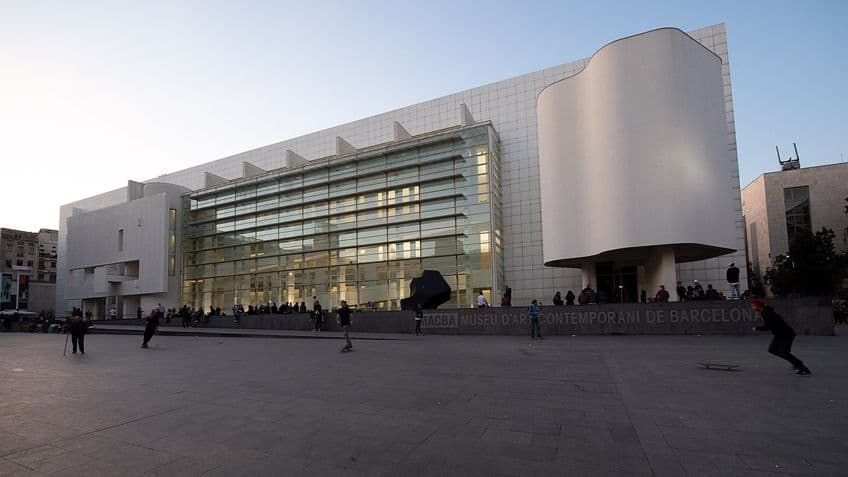
The exhibitions at the Museu d’Art Contemporani de Barcelona also narrow in their focus on specific artists, which guide visitors through complex artistic processes and highlight the relationships between the art from different decades in contrast to art in the present day. The Barcelona Museum of Contemporary Art remains one of Spain’s top institutions for “research and reflection” on the art of modern times.
The Guggenheim Museum Bilbao (Est. 1997)
| Location | Bilbao, Spain |
| Date | 1997 |
| Founder | The Solomon R. Guggenheim foundation |
| Architect(s) | Frank Gehry (1929 – Present) |
| Size m2 | 24,000 |
| Visitors Per Year | Over 531,000 |
The Guggenheim Museum Bilbao is one of the best Modern and Contemporary Spanish art museums that opened in 1997 and has since been one of the most admired institutions in modern history. The building is most famous for its incredible Contemporary architecture, which received tremendous praise for its ability as a building alone to unite individuals of multiple disciplines. From architects to the general public, the museum is cherished.
The museum currently receives more than 1.2 million visitors each year and includes in its collection some of the best Contemporary artworks by artists such as Richard Serra, Anselm Kiefer, and Mark Rothko.
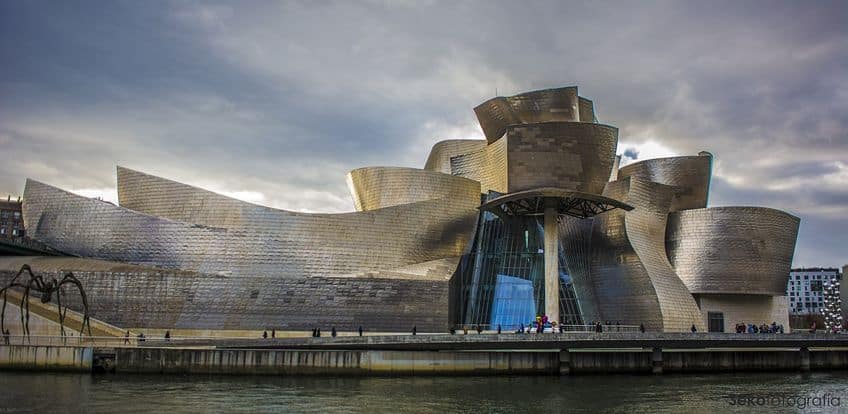
Centre Pompidou Malaga (Est. 2015)
| Location | Málaga, Spain |
| Date | 2015 |
| Founder | Unavailable |
| Architect(s) | Francisco Javier Pérez de la Fuente (n.d.) and Juan Antonio Marín Malavé (n.d.) |
| Size m2 | 1,800 |
| Visitors Per Year | Over 500,000 |
The Centre Pompidou Malaga is a popular Spanish art institution that opened in 2015 and was a pop-up branch of the French mother museum, the Center Pompidou in Paris. The building was designed by Juan Antonio Marín Malavéa and Javier Pérez De La Fuente and is recognized as one of Spain’s best artistic centers. The center hosts many art galleries for visitors to explore and is situated in a multi-colored cube structure along the city’s port. Works that you can find in the center’s permanent collection include works by artists such as Francis Bacon, Pablo Picasso, and Marc Chagall. The collection at the Center Pompidou Malaga was the first international branch outside of France and continues to generate many tourists for Málaga.
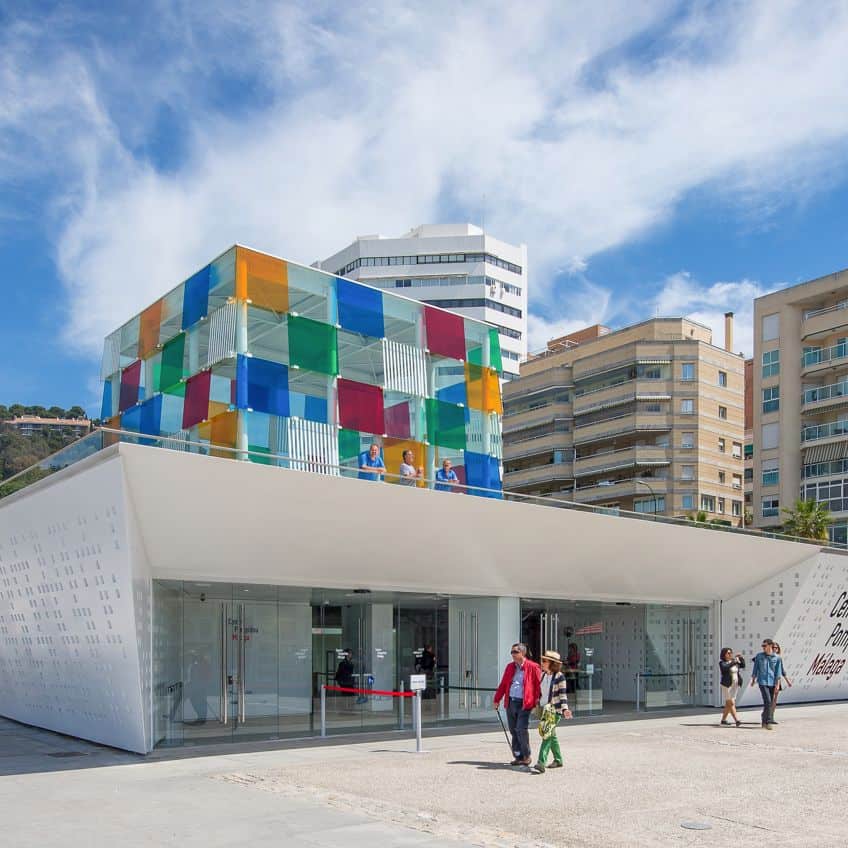
The art of Spain and the institutional bodies that govern it are multifaceted and range from both large international galleries to medium-sized centers. Either way, many of these art institutions possess the power of influence alongside the ability to show the public glimpses into Spanish art history. We hope that this article has enlightened you on some of the best art museums and art galleries in Spain, and hopefully inspired you to branch out and travel!
Frequently Asked Questions
What Is the Most Visited Art Museum in Spain?
The most visited art museum in Spain is the Museo Nacional del Prado or El Prado museum, which is incredibly popular for being one of the most visited institutions in Madrid. The Prado is famous for its collection of old Spanish masterworks by artists such as Francisco Goya and Diego Velázquez.
How Many Art Museums and Galleries Are There in Spain?
There are approximately more than 1,500 art museums and galleries in Spain that showcase artworks from different periods in Spanish art history, as well as artwork influenced by Contemporary history and movements such as Surrealisms, Cubism, Baroque painting, architecture, the decorative arts, photography, and Spanish culture.
What Masterpieces Can You View in Madrid Art Museums?
Famous masterpieces such as The Garden of Earthly Delights (1503 – 1515) by Hieronymus Bosch, Las Meninas (1656) by Diego Velázquez, and Guernica (1937) by Pablo Picasso can be viewed in Madrid art museums.
What Is the Most Famous Madrid Art Museum?
The most famous Madrid art museum is considered to be the El Prado museum, which is the home of many great masterpieces by artists such as Diego Velázquez, Caravaggio, Rembrandt, and Francisco Goya, among many others. The Prado Museum is one of the most famous sites for art lovers in Madrid.
Jordan Anthony is a Cape Town-based film photographer, curator, and arts writer. She holds a Bachelor of Art in Fine Arts from the University of the Witwatersrand, Johannesburg, where she explored themes like healing, identity, dreams, and intuitive creation in her Contemporary art practice. Jordan has collaborated with various local art institutions, including the KZNSA Gallery in Durban, the Turbine Art Fair, and the Wits Art Museum. Her photography focuses on abstract color manipulations, portraiture, candid shots, and urban landscapes. She’s intrigued by philosophy, memory, and esotericism, drawing inspiration from Surrealism, Fluxus, and ancient civilizations, as well as childhood influences and found objects. Jordan is working for artfilemagazine since 2022 and writes blog posts about art history and photography.
Learn more about Jordan Anthony and about us.
Cite this Article
Jordan, Anthony, “Best Art Museums and Art Galleries in Spain – The Top 18.” artfilemagazine – Your Online Art Source. October 6, 2023. URL: https://artfilemagazine.com/best-art-museums-and-art-galleries-in-spain/
Anthony, J. (2023, 6 October). Best Art Museums and Art Galleries in Spain – The Top 18. artfilemagazine – Your Online Art Source. https://artfilemagazine.com/best-art-museums-and-art-galleries-in-spain/
Anthony, Jordan. “Best Art Museums and Art Galleries in Spain – The Top 18.” artfilemagazine – Your Online Art Source, October 6, 2023. https://artfilemagazine.com/best-art-museums-and-art-galleries-in-spain/.


